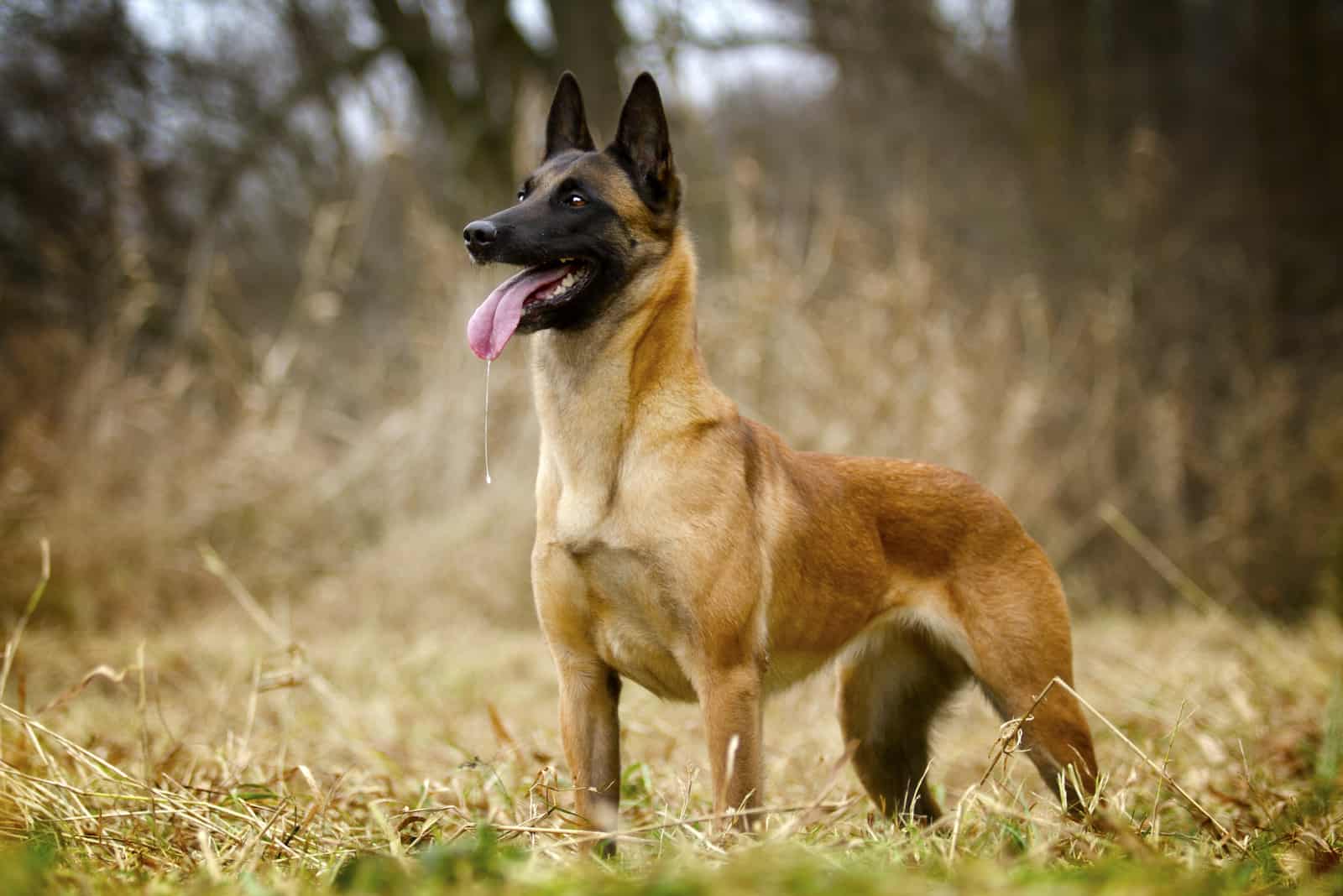In this article, we’re going to talk about training one of the world’s smartest dogs – the Belgian Malinois! This incredible dog breed is known for its intelligence, loyalty, and discipline.
But, with a great mind comes great responsibility. The Belgian Malinois is, in fact, so smart that many dog owners find it challenging to train such a pup.
Don’t let that discourage you from getting a Belgian Malinois puppy. It may not be easy to train a Belgian Malinois dog, but if done with care and in a proper way, they will learn and grow accordingly.
We are going to go through the do’s and don’ts of training a Belgian Malinois. These tips will help you understand the Belgian Malinois behavior patterns and how to deal with this high-energy dog!
First, let’s begin with a Belgian Malinois history lesson. It’s important to know what the Belgian Malinois dog breed was originally bred for and what kind of personality traits it inherited throughout its development.
Belgian Malinois Breeding History
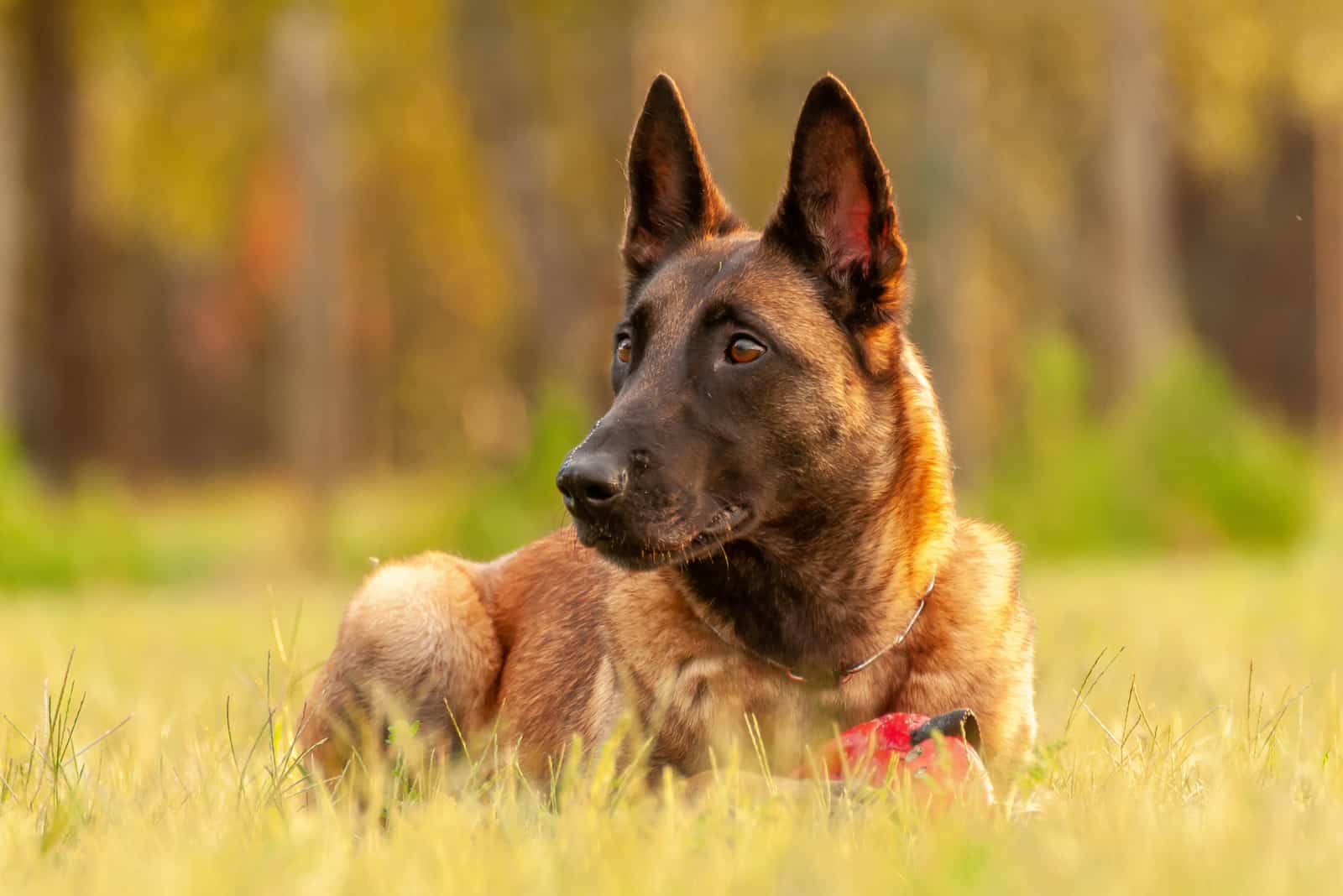
The Belgian Malinois is a purebred dog that was bred in Belgium. Its breeding history dates back to the 1800s. These high-energy pooches were bred as herding dogs that later proved to be great protection dogs as well.
The Belgian Malinois belongs to the herding dog group in which we see the shepherd dogs. This dog breed is known as a close relative to the Belgian Shepherd. Most of these puppies are similar in terms of appearance.
The Belgian Malinois dog breed resembles the Dutch Shepherd dog breed, and most people often confuse these two. But, these are two different dog breeds.
Sometimes, the Belgian Malinois is mistaken for a German Shepherd, but the differences are obvious between these two.
The history of Belgian Malinois recognition by kennel clubs traces back to 1911 when two Mals were registered as German Sheepdogs.
After two years, the Belgian Malinois went under the new name, “Belgian Sheepdog”. In 1959, the American Kennel Club, commonly known as the AKC, recognized this breed and registered the Belgian Malinois under the herding dog group.
An interesting fact about the Belgian Mals is that they were used in the first World War as service dogs, assisting and aiding soldiers in combat due to their high intelligence and adaptability.
Today, they are recognized as herding dogs by the AKC organization. That is the reason why we often see them working for the police, the military, in drug search, or in search and rescue situations.
Belgian Malinois Trainability
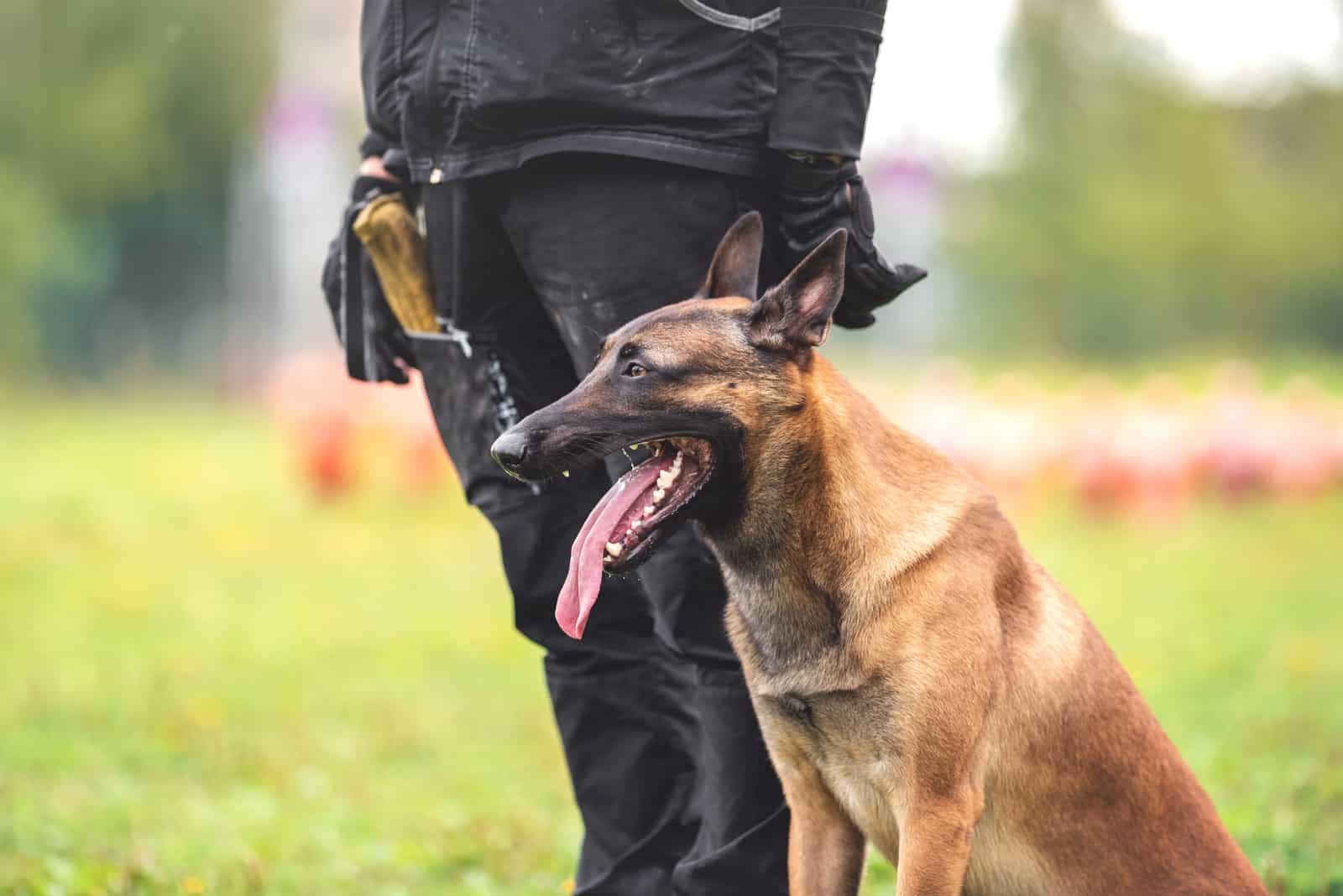
The Belgian Malinois, a powerful and intelligent working dog, known as the “King Of All Dogs”, is one of the most highly trained military working dogs in the world.
The Belgian Malinois is a very intelligent dog with strong work ethics and inherited herding instincts.
Because of its high intelligence, the Belgian Mal is a highly trainable working dog. Mals require a great deal of time and effort, so I wouldn’t recommend them to first-time dog owners.
Don’t be surprised if a Belgian Malinois outsmarts you. This dog breed should not be taken lightly in terms of training.
Most dog owners think that a highly trainable dog is pretty easy to train. But, that can not be further from the truth.
Because of its strong personality, the Belgian Malinois needs a leader. It’s important for a dog owner or a dog trainer to establish themselves as the alpha/leader. If not, it could lead to unwanted behavior.
Training a highly trainable dog is a real task that requires a lot of patience and dedication. Therefore, Belgian Malinois dog training should be taken seriously.
The Belgian Malinois owner must be determined and wilful when training their new puppy. These dogs must be kept busy all of the time – training them only throughout puppyhood will not be enough.
An adult Belgian Malinois requires mental stimulation, and its needs have to be met if you don’t want to end up with a stubborn dog. The Belgian Malinois is not a lap dog that will sit still throughout the day.
Belgian Malinois Training: Exercise Requirements
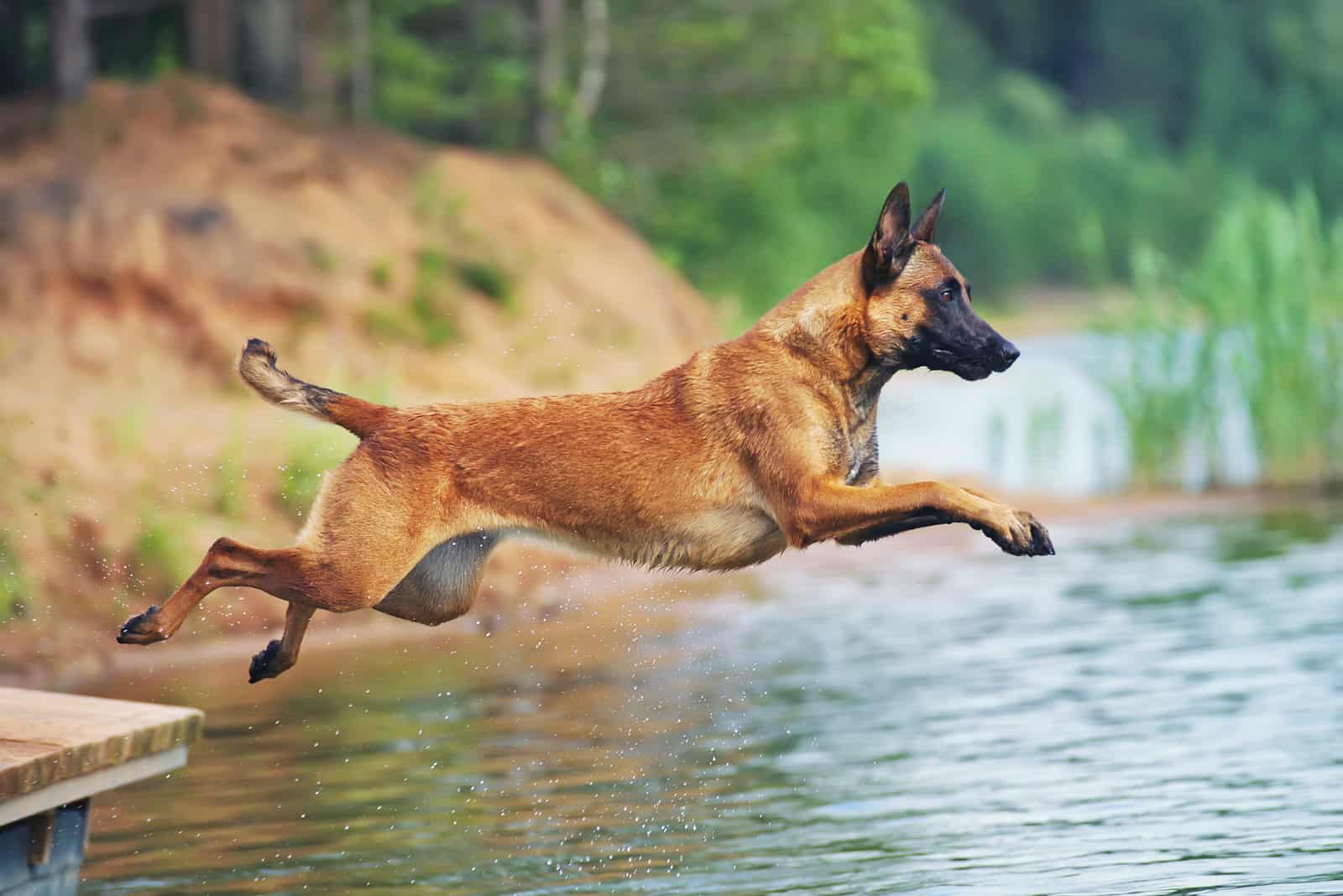
The Belgian Malinois is an outstanding dog breed. Not only is it extremely intelligent, but it is also very energetic and playful.
This is why the Belgian Malinois requires a lot of exercise. Almost all Belgian Malinois owners confirm that this dog breed is often so full of energy that it seems as if it’s going to go over the roof!
Well, this kind of behavior is normal for herding dogs that were kept outside while having a job to do. Because of this, the Belgian Malinois will want to go outside quite often. So, taking the Mal outside twice a day might not be enough.
Having a spacious garden or a park nearby is a life saver when owning a Belgian Malinois. This dog will want to run around and play with its owner. Quality playtime will strengthen the bond between the owner and the Belgian Malinois puppy, and so will regular exercise and training.
Belgian Malinois Training: What You’ll Need
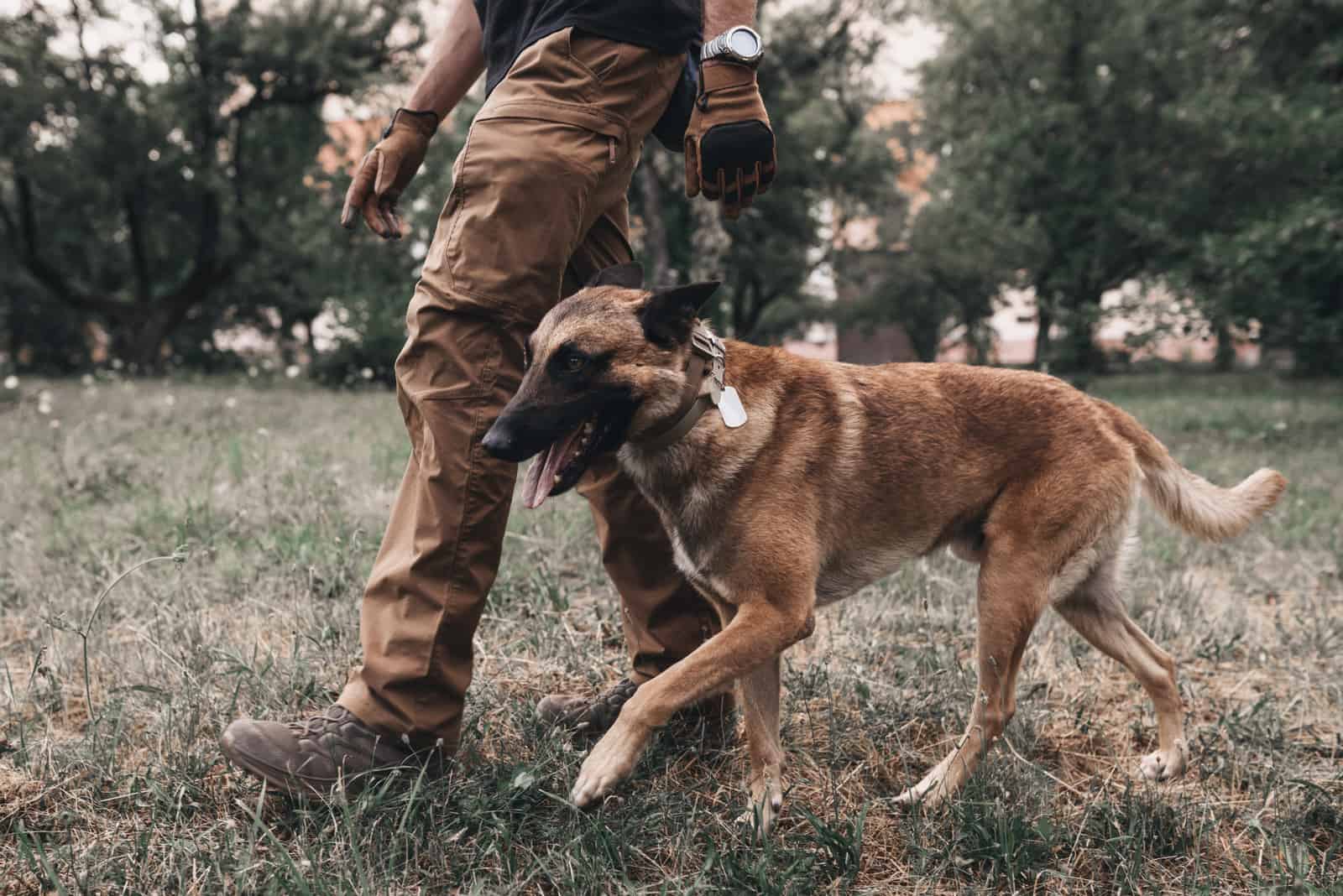
First thing’s first, you will need the appropriate equipment. For better control and limitation of the dog’s motions, a collar and a leash will do nicely. Some dog owners and dog trainers use prong and pinch collars.
These can be seen on the German Shepherd dog, as well as other dog breeds like the Rottweiler and the Pit Bull. But, the use of these collars is highly debatable because it is proven to be inhumane and unsafe for the dog’s health.
Using a safe collar for loose-leash walking and leash pulling training is the best option you can choose.
When putting on the dog’s collar, be especially gentle and don’t overdo collar tightening. There should always be room for two fingers between the dog’s neck and the collar.
One should make sure to use at least two leashes – a short one and a long one, as each of those have their own uses.
Short leash dog training is advised for Belgian Malinois that are pulling and jumping up while walking with you. It is also used for teaching your Belgian Malinois puppy to walk side by side with you.
Loose-leash training will help teach your Mal how to walk nicely in public. It is also a great way for your Belgian Malinois puppy to have more room and freedom to roam and sniff around while being close to you.
Dogs tend to be more responsive and happier when having enough room to explore the world around them.
Another thing you might want to have in your pocket is time… literally! While training the Belgian Malinois, you should always have a stopwatch in hand to measure the time spent on teaching your dog new things.
Belgian Malinois training shouldn’t be too long nor too short. It’s best to keep track of the daily needs that your Mal will let you know of.
Belgian Malinois Training Methods
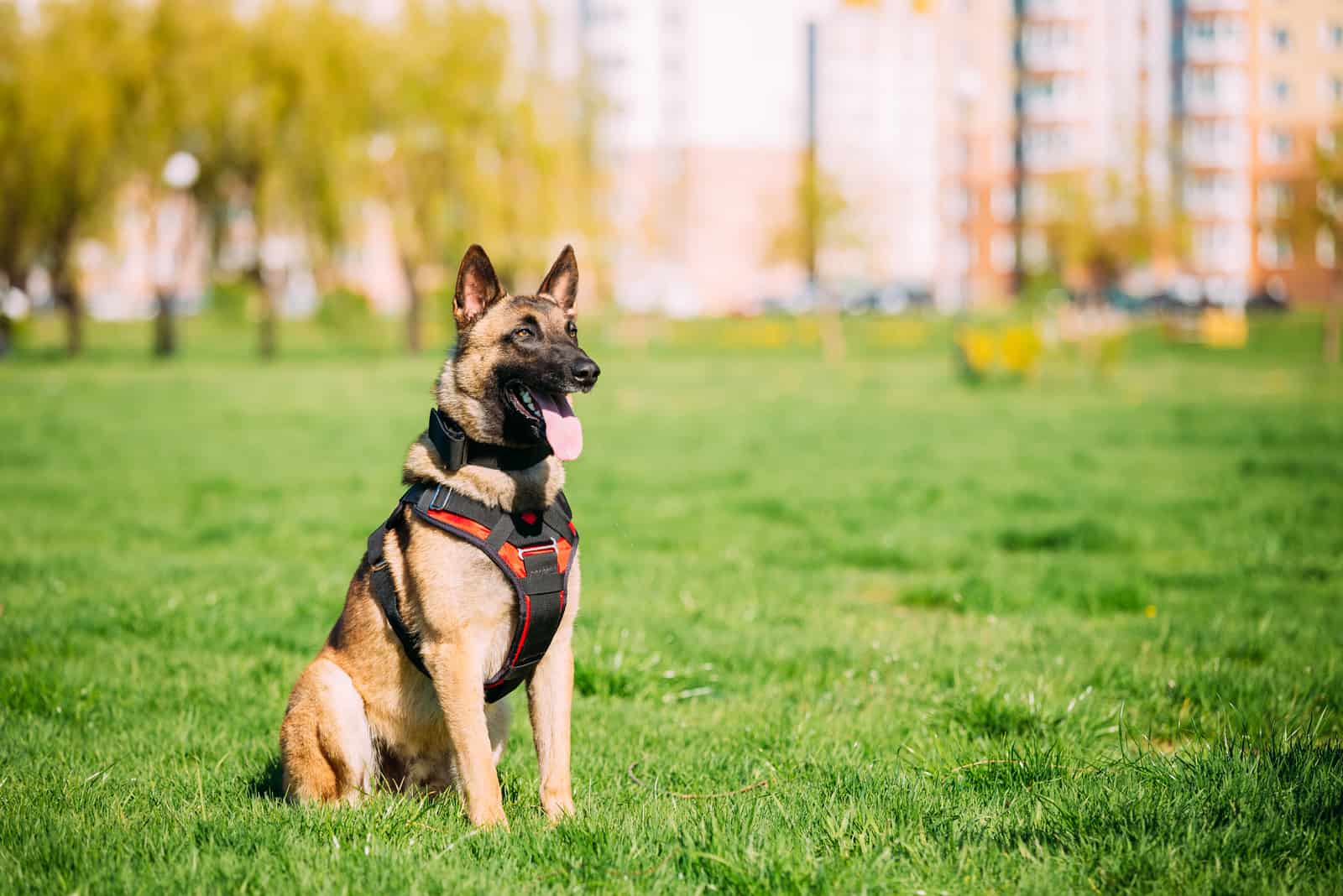
Training a highly intelligent and high-energy dog such as the Belgian Malinois requires a lot of time and effort. This working dog needs constant mental stimulation and daily physical activity.
Most first-time dog owners are not aware of this until they get a new Belgian Malinois puppy. And, it’s not just first-time dog owners – even experienced dog owners face difficulties when training a Belgian Malinois dog.
Understanding the Belgian Malinois dog’s personality and daily needs will help you with training it properly. With good training, the Belgian Malinois will make an amazing, loyal, and loving four-legged companion.
Training methods should include the right balance between positive reinforcement and affirmative obedience training. Also, the balance between the reward and the punishment system is needed.
Here are the do’s in Belgian Malinois training!
Positive reinforcement
Positive reinforcement is incorporated in all forms of dog training. This is what all pet owners call the miracle training method. But, positive reinforcement alone will not lead you to success in training your Belgian Malinois puppy.
Positive reinforcement is best described as a “tool” during other training methods. Using positive reinforcement means using delicious snacks to reward your new puppy after it has done something correct.
To introduce positive reinforcement in your daily dog training, you have to find the snack that your puppy goes absolutely crazy for! Dogs will do anything for a yummy treat, and that’s something that you will want to take advantage of during dog training.
Dog food, treats, and toys are used as motivators that play a key role in dog behavior conditioning.
So, after your Belgian Malinois puppy does what you have told it to do and you’re happy with the dog’s behavior, reward it with a treat, followed by words of affirmation and encouragement.
Clicker training
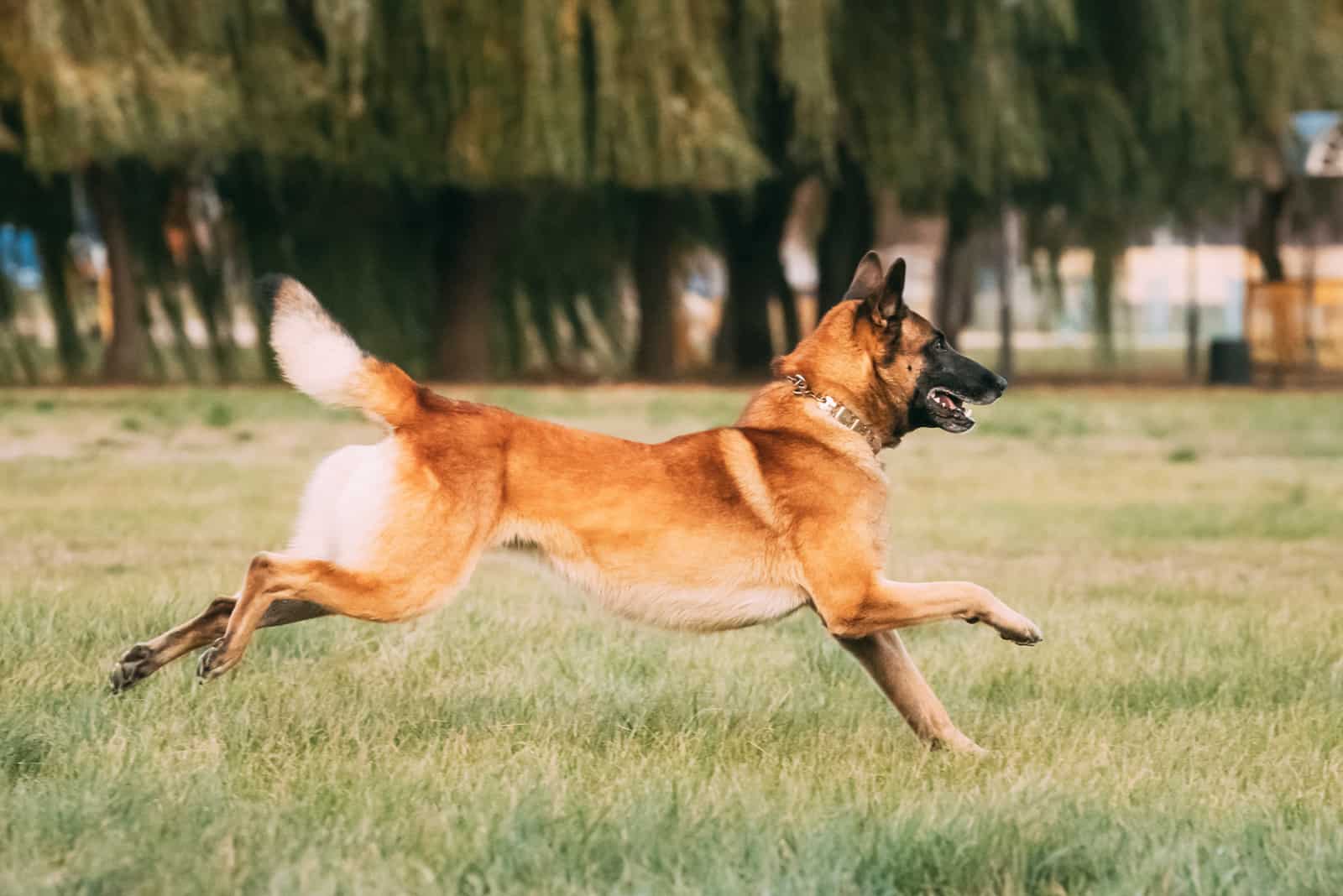
Clicker training is known as a form of positive reinforcement training.
As the name implies, this method of training uses a clicker that acts as a signal for a reward. It is an old method of dog training, and it has proven to be one of the most effective ways to train your dog.
How this method works is described through mark and reward. It’s a type of dog behavior conditioning.
After your Mal has obeyed a command, a clicker sound should follow before giving your puppy a treat. This way, the dog will understand that the sound of a clicker is a signal connecting it with positive reinforcement.
Since Belgian Malinois are extremely intelligent dogs, they will understand the clicker signal after it has been repeated approximately five to seven times. This makes the Belgian Malinois stand out among other dog breeds. Most dog breeds require 10 to 20 repetitions during clicker training.
Voice commands
One of the first things new owners should teach their new Belgian Malinois puppy is to react to simple voice commands.
Voice commands are very important in puppy training. Whether you’re training a Poodle or a Belgian Malinois, it’s crucial to teach it the basic “YES” and “NO” voice commands.
Dog owners and trainers should introduce a keyword like “YES” before the start of the training sessions, just for recognition.
During dog training, the trainer says “YES” after the dog has done an exercise. Positive reinforcement with treats is used as a reward for a nicely done job. After that, the trainer should let the Belgian Malinois puppy play for a bit and then repeat the whole process again.
Once it has learned that the word “YES” stands for positive reinforcement and affirmation, the word “NO” should be introduced and associated only with negative activities. Think of it as negative reinforcement.
This word can be used when the dog’s behavior is inappropriate around children or food. The word “NO” can also be used for correcting behaviors, such as constant barking or other bad habits.
When saying “NO”, make sure to use a more serious voice rather than the sweet voice you use when cuddling with your Belgian Malinois puppy.
When training the Belgian Malinois, the easiest trick you can have the dog learn is “SIT”. You can teach the dog to sit, and use the aforementioned positive or negative commands to have it learn to sit still.
There are so many voice commands that Belgian Malinois are capable of understanding and memorizing. In fact, these dogs can learn around 30 words with minimal voice command training.
Obedience training
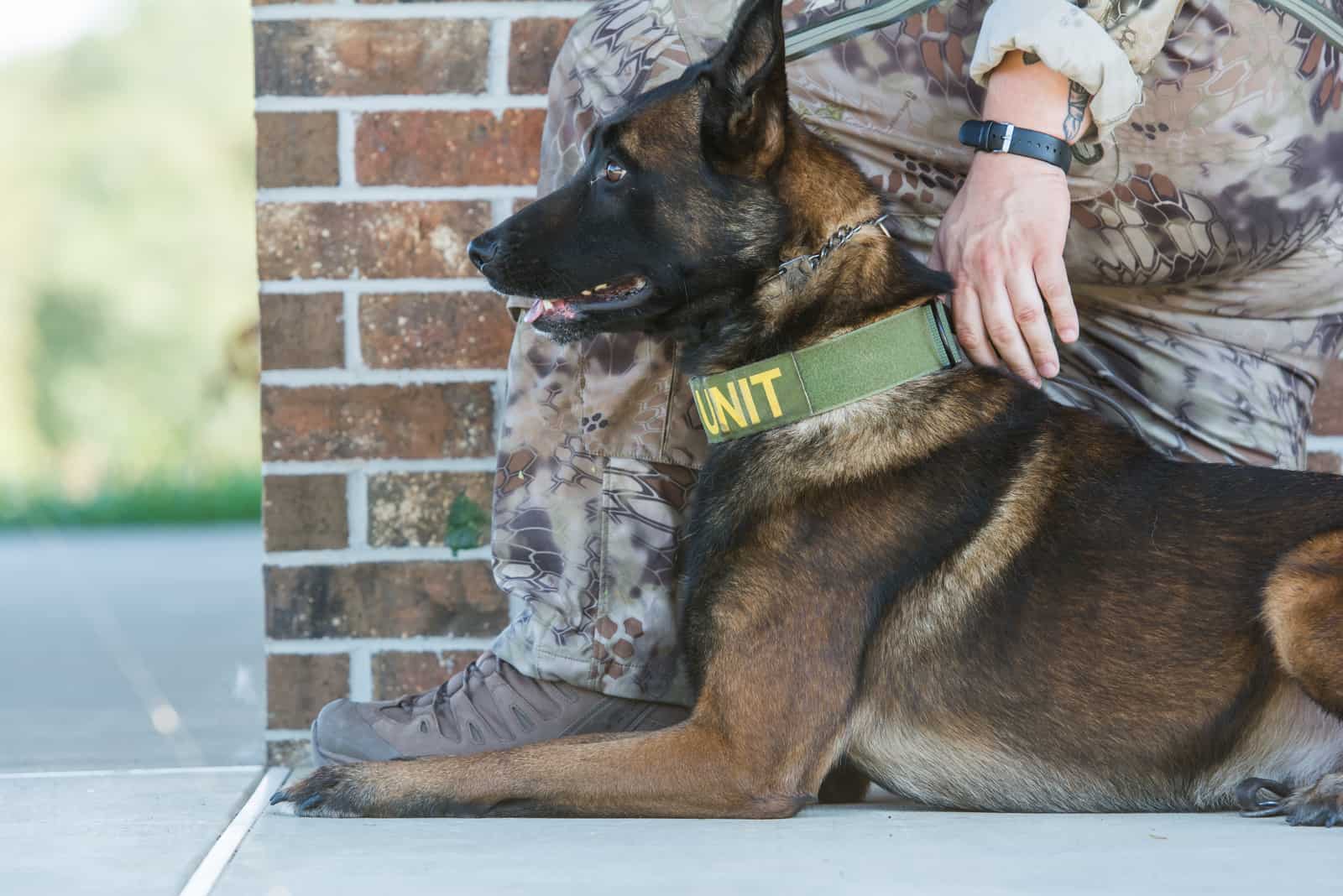
Obedience training is an important form of dog training. All dogs should be put through obedience training from a very young age – especially the high-energy dog breeds.
This training method is usually done by dog training instructors, and it includes all other forms of dog training.
Most experienced dog owners succeed in training the Belgian Malinois obedience, but this might be difficult for first-time Mal owners. So, it is best to find a dog training school that offers obedience training programs.
Licensed and experienced dog trainers will recognize troublesome dog behavior or that kind of behavior that might become troublesome in the future, whereas some dog owners may not recognize this type of behavior.
Positive reinforcement is commonly applied in this training method, too. While doing obedience training, if the dog is doing good, there should be a reward in place like a toy, a treat, or some dog food.
Protection training
The Belgian Malinois can make a great protection dog if you decide to put it through protection training.
There are three different levels of protection training in Belgian Malinois dogs. All three levels include training the dog to be a good family pet that gets along well with all family members and other animals.
Protection training teaches the Belgian Malinois to protect its owner when commanded to do so. This is a special training method that should be done by professional dog trainers.
If trained incorrectly, this method could lead to an aggressive dog that will most likely attack other humans and animals. So, it’s best to leave it to the professionals.
One thing to keep in mind is that protection training programs are pretty expensive. If you decide to train your Belgian Malinois in this manner, be prepared to spend a fairly big amount of money.
Potty training
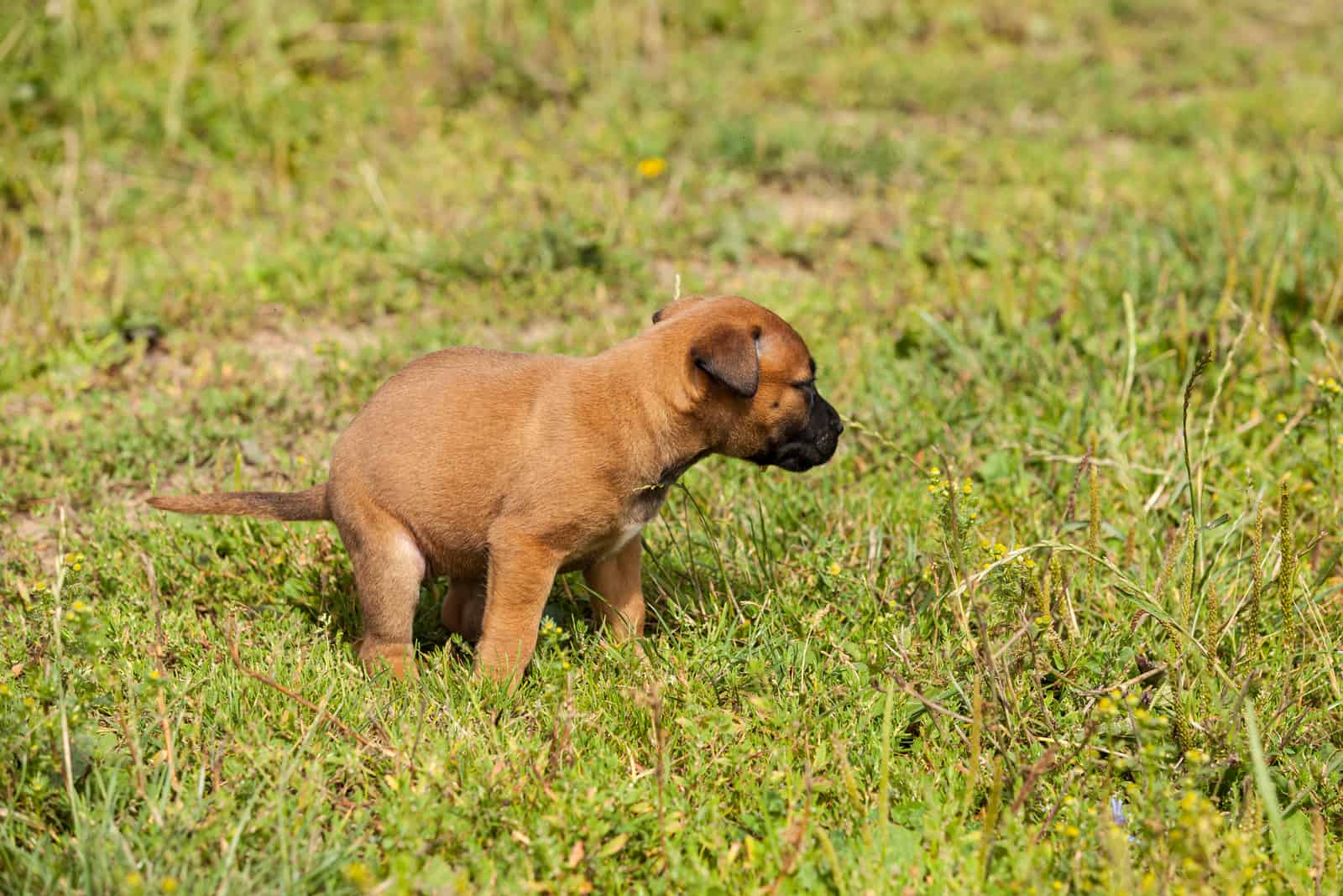
Potty training a Belgian Malinois puppy is an important step for both you and the dog. Puppies are usually potty trained with puppy crates. Although this might sound confusing, it actually makes a lot of sense.
A puppy crate acts as a housing for your Belgian Malinois puppy. All puppies have that instinct to curl up in a safe, small place. So, getting your Mal puppy accustomed to a puppy crate will be the next big step in teaching it potty training.
Putting your Belgian Malinois puppy in a puppy crate will do wonders. If your Belgian Malinois puppy feels like it’s time to go, it will notify you by scratching its crate or whining to let it go out.
At this time, you should immediately take your dog outside, and also include positive reinforcement. You will be reinforcing its decision to go outside and not use its crate as a toilet.
Teaching your Belgian Malinois puppy potty training from a very young age is going to make your life easier!
Early socialization
One of the most important factors when training a Belgian Mal puppy is early socialization and exposing them to different situations, people, and dogs.
These dogs are very social and outgoing. Therefore, they require frequent outings where they will meet new human and animal friends.
Early socialization should start from a very young age – during the first two months of age. This high-energy pooch will love the attention it’s getting, so socializing it with others won’t be an issue if done properly.
Teach your dog to greet new people nicely rather than enforce its protective and territorial nature.
Puppy classes are a great place to get started with Belgian Mals. If you’re not sure how to properly socialize your new Belgian Malinois puppy, seek dog training schools that offer programs in which these dogs will be put through socialization.
Remember, it’s important to start as early as possible!
Belgian Malinois Training: What You Shouldn’t Do
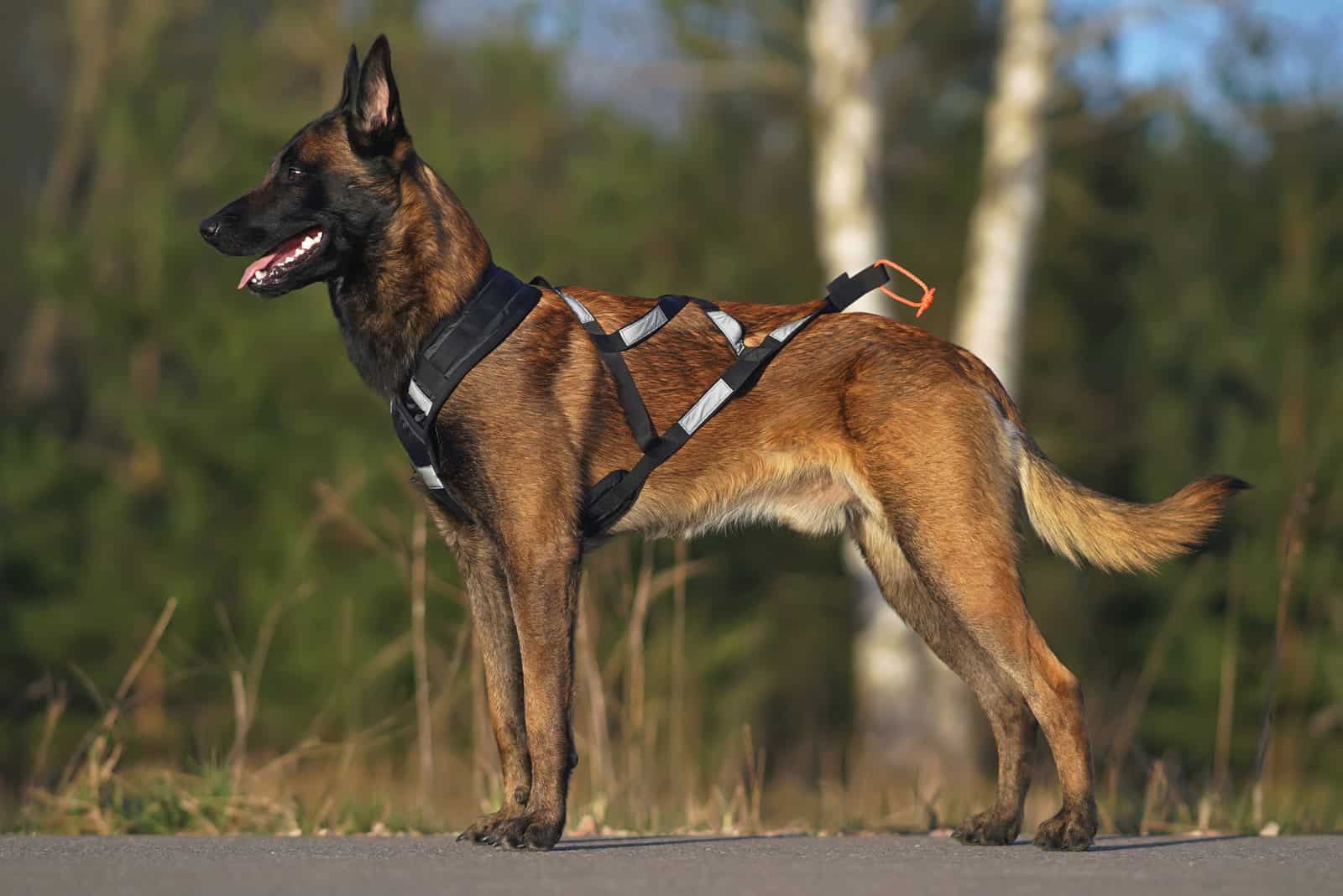
Okay, now that we know the do’s of Belgian Malinois training, it’s time to talk about some don’ts.
Inconsistency and impatience are the recipe for disaster. If you get a new puppy, you should be prepared for puppy training. And, if you have indulged in puppy training, you should be consistent and patient during the whole process.
Making a habit out of puppy training is a great way to incorporate this in your everyday activities. Don’t postpone the dog training – try to stay on track.
Hitting your dog is NEVER a good idea. If your puppy didn’t do as good as you thought it would, don’t hit it or yell at it. Not only is this a very cruel thing to do, but it also promotes negative behavior.
There is a minimum chance that you will get an obedient and relaxed puppy if you show this kind of behavior towards it. Hitting your dog will only make it more anxious and scared of you.
As a first-time owner, there are many mistakes you can make when training a Belgian Malinois dog. If you are not sure of your dog training skills, or your Mal is simply not listening to you, try searching for professional dog trainers!
Dog Trainers And Dog Training Schools
If you’re a first-time Belgian Malinois dog owner, I would highly recommend searching for a professional dog trainer.
Because these dogs are so intelligent and energetic, most new owners aren’t usually able to keep up the pace.
When it comes to training a Belgian Malinois puppy, the owner should be dominant and headstrong. Showing the Belgian Malinois puppy that you’re the alpha will make you the leader of the pack.
Dog training is a very delicate process that requires a lot of patience. If done incorrectly, the adult Belgian Malinois will develop unwanted behavior that can cause many problems both for you and other family members. To prevent this from happening, new owners should start with quality dog training as early as possible.
If you get a Belgian Malinois puppy and find that none of your dog training methods are working, then it’s definitely time to search for reputable dog training schools.
Professional dog trainers and behaviorists know all too well about the Belgian Malinois behavior patterns and what works best with these intelligent dogs.
A dog trainer will first spend some time getting to know the Belgian Malinois puppy more personally so he can find what stimulates the dog best. He will use this knowledge later in training the Belgian Malinois puppy.
Belgian Malinois Personality
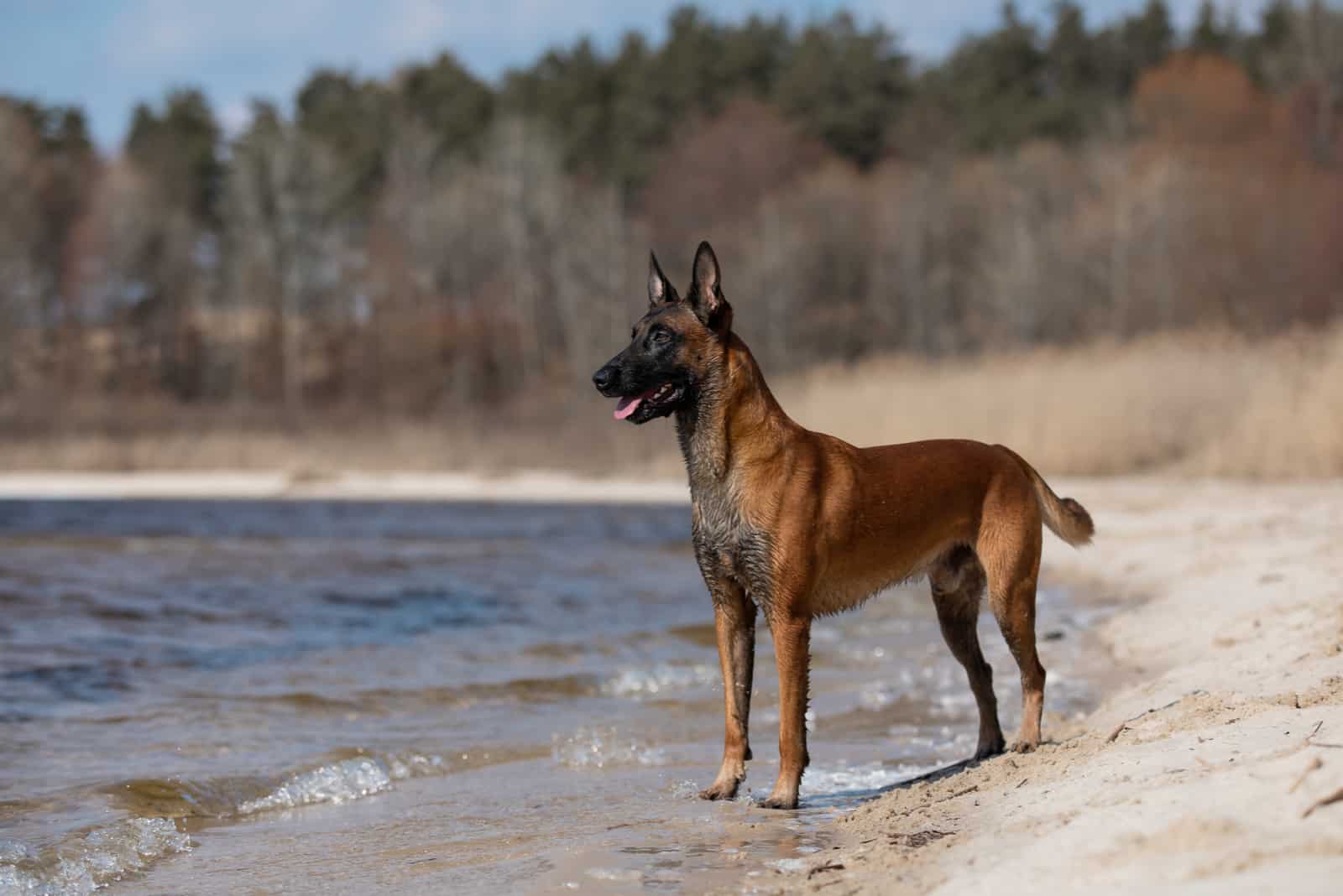
The Belgian Mal is an extremely dignified and intelligent dog breed. Considering that this dog was bred for the sole purpose of herding livestock, it has inherited strong herding instincts as well as a high prey drive.
The Belgian Malinois is that type of dog that loves having a job to do. After all, its purpose was to work. This is why the Belgian Malinois makes an outstanding service dog. Many can be seen working in police K9 units.
Because of its loyalty and strong work ethic, the Belgian Malinois makes an amazing guard and protection dog. This dog might be wary of strangers, but will do well once it meets a new friend.
The Belgian Malinois is very protective and loving with its family members. But, if not properly trained and socialized, this behavior won’t be realized, and that can lead to a lot of trouble for both the dog owner and the dog.
Even though most Belgian Malinoises make good family pets and get along with all family members, these dogs are often strongly devoted to only one person – their owner.
The Belgian Malinois doesn’t get along well with other pets, especially cats. These dogs have a very high prey drive and will often chase small animals like cats, rabbits, and mice.
Keeping small pets in the same household with the Belgian Malinois is not recommended. Even if the two grow up together, the Mal’s high prey drive instincts might get the best of it.
Alongside its high prey drive, the Belgian Malinois tends to be very territorial, so it might not be very welcoming if other dogs step in its territory. With good training practices, this can all be prevented or reduced to a minimum.
What Age Should I Start Training My Belgian Malinois?
Smart dogs tend to be a bit on the stubborn side. Because of its inherited stubbornness, the Belgian Malinois should be trained from a very early age – as early as eight weeks of age.
Being that they are extremely intelligent, they absorb information at a great pace. So, you will see great progress as soon as you start training your new Belgian Malinois puppy.
The Belgian Malinois is teeming with energy, so when training it, one should be prepared to spend a lot of time outdoors.
Final Thoughts
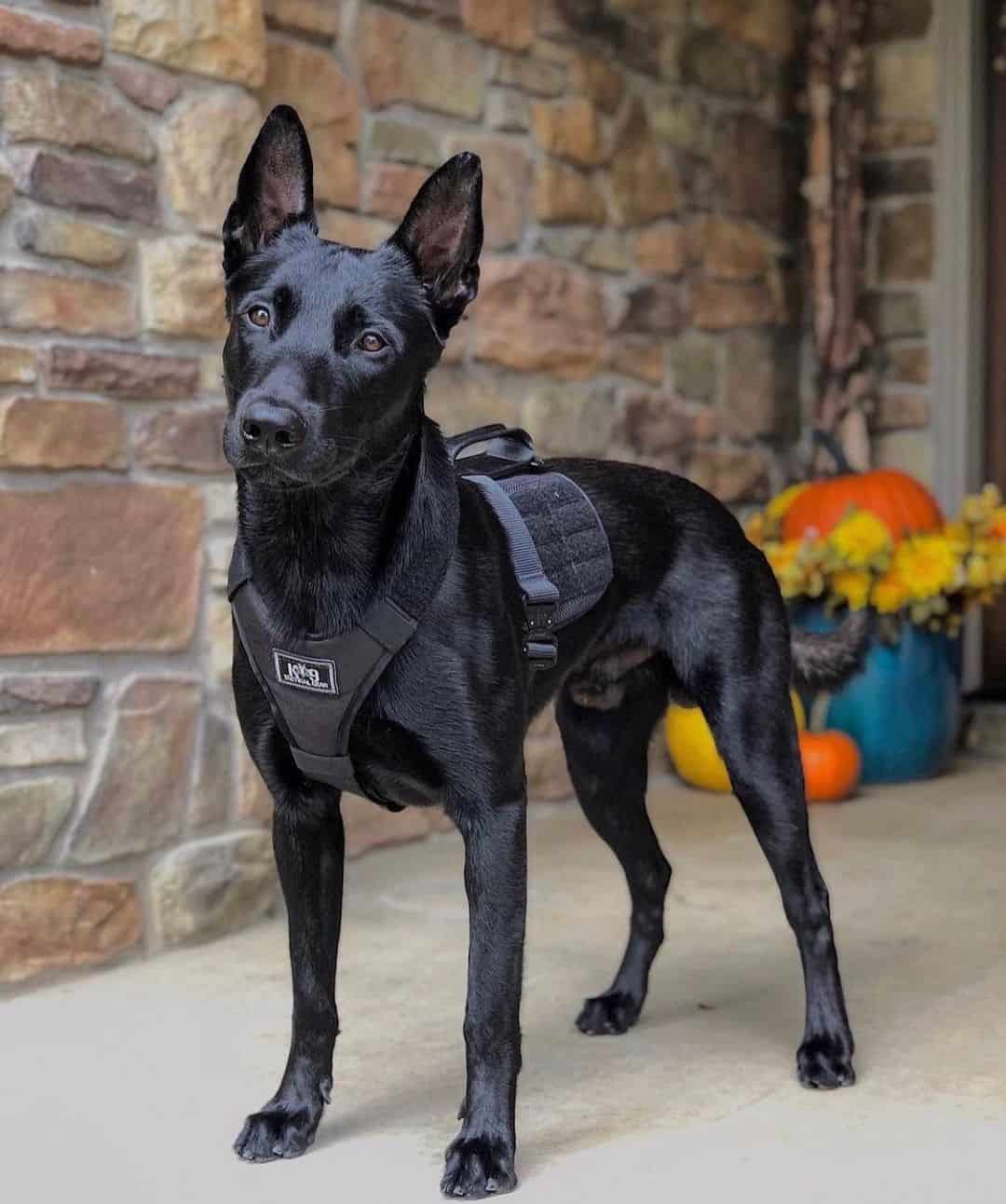
Photo from: @worldofmalinois
Belgian Malinois training is a very long and arduous process. Because of the specific inherited personality traits these wonderful breeds are known for, it’s important to provide it with necessary training and exercise.
During puppy training, you should be aware of how your behavior affects the dog’s behavior. Keeping a cool head and arming yourself with patience will be beneficial for both you and your new Belgian Malinois puppy.
Dogs can sense built-up tension and frustration, so don’t allow yourself to be stressed around your lovely pooch. Give your Belgian Malinois all the love and attention it deserves!
Before getting a Belgian Malinois puppy, make sure to search for reputable breeders in your area. Knowing more about the puppy’s parents will help you predict what personality traits it will show in the future.
A dog as smart as the Belgian Malinois should not be left alone for too long nor should it become bored. Its intelligence and affection make the Belgian Malinois an amazing canine companion that will learn so much from you… and you will learn so much from it, too!
Read Next: Great Pyrenees Training Tips You Didn’t Know You Needed
